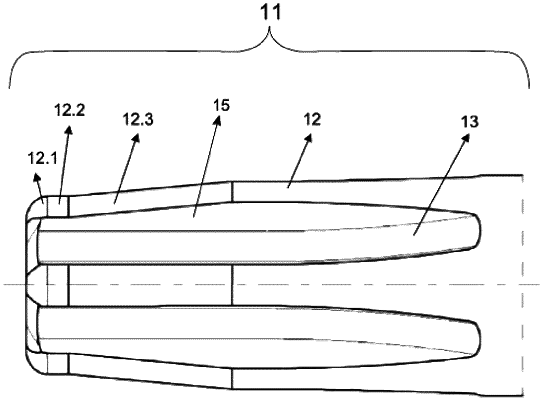| CPC A61C 8/0089 (2013.01) [A61C 13/08 (2013.01); B25B 15/005 (2013.01)] | 9 Claims |

|
1. A dental tool for coupling to a prosthetic component, the dental tool comprising, at a lower end:
a plurality of protrusions, each of the plurality of protrusions extending from an edge at a distal most end of the lower end of the dental tool into three subsequent regions, the three regions being defined as:
a first region which is (i) a circumferential corner that is convexly curved outward along a direction of a longitudinal axis of the dental tool, (ii) located at a lower tip of each respective protrusion in the direction of the longitudinal axis, and (iii) configured to facilitate fitting the dental tool into the prosthetic component,
a second region parallel to the longitudinal axis of the dental tool, and
a third region with a conical shape, the third region being radially tapered outward along the direction of the longitudinal axis of the dental tool away from the distal most end of the lower end of the dental tool; and
a plurality of recesses extending to the edge at the distal most end of the lower tip of the lower end of the dental tool, wherein:
the plurality of protrusions and the plurality of recesses are alternately arranged to form substantially flat and planar dental tool side walls which linearly and radially extend relative to the longitudinal axis of the dental tool, and
the plurality of recesses extend to a circular flat region at the distal most end of the dental tool.
|